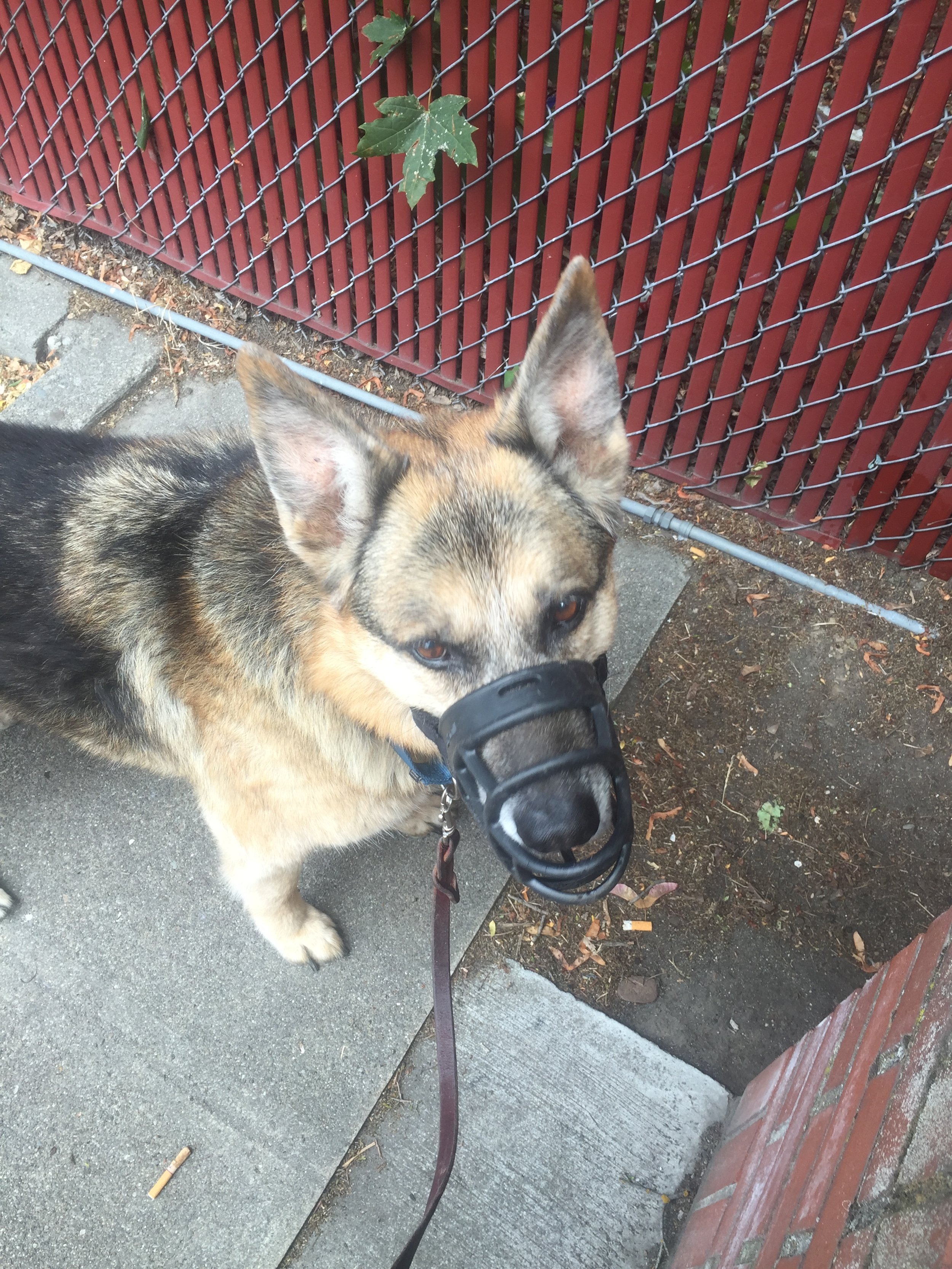Taking Your Reactive Dog to the Vet
Having a reactive or aggressive dog is pretty challenging already, but taking them to the vet can be an absolute nightmare with all your dog’s triggers in one small, crowded space. You’ve got lots of people (often staring at your dog or wanting to say hi), kids running over, dogs on flexi-leads rushing up to your dog, cats yowling in their carriers, dogs barking in the back—all in a tight space when your dog already isn’t feeling great. It’s what nightmares are made of for reactive dog owners.
Here are some tips to make it easier:
Don’t wait in the lobby with your dog
The single most important thing I want you to know - you do NOT have to take your dog straight inside!
Leave them in the car while you go inside to check in.
If it’s too hot, call from the parking lot to check in. “Hi, this is Carolyn calling to check in for Comet’s appointment. We’re going to wait in the car until a room is ready for us. He doesn’t do well with other dogs, and I don’t want him going nuts in the lobby.”
Maybe you can bring a second person to wait in the car with your dog. Whatever you decide, a crowded lobby full of other people and dogs isn’t an ideal place for reactive dogs. In fact, most dogs don’t actually enjoy just hanging out in a vet lobby. Don’t bring your dog inside until there’s an exam room available or staff is ready to take your dog to the back.
Ask staff for help
Ask staff for help navigating the parking lot, vet clinic, or exam room.
“Sam is freaked out by kids - can you help us get through the lobby safely?”
“Otis hates other dogs, can you help us get to our room quickly?”
“Is there a side door we can use to bypass the lobby?”
They see it all the time and will be happy to help. They deal with reactive dogs regularly and would rather help you than have a barking, lunging dog disrupting their full lobby and putting others at risk. They can help you run interference, ask people to back up and let you pass, help body-block other dogs from rushing in, or simply let you use the back door to avoid the lobby altogether.
My dog, Rocky, waiting in the vet parking lot with his muzzle on.
Let staff know
On that note, always let staff know your dog has aggression or reactivity issues, especially if you haven’t seen this vet before.
“Just a reminder as you take her to the back, Olive will bark and lunge at other dogs!”
“Don’t forget, Rocky will growl and snap at men - be mindful of staff approaching him!”
Give them the information to handle your dog with extra care and take extra precautions to prevent any mishaps. If you’ve been in before, there’s likely a note in your pet’s chart, but it’s never a bad idea to remind them - they’re busy and things get overlooked.
Muzzle training
If your dog has issues with strangers or with being handled, I would recommend having them muzzled for your appointment and have them muzzled before you take them inside. It’s best to train your dog to accept and enjoy wearing a basket muzzle, so it’s one less thing to struggle with at appointments.
Bring treats
Bring really great treats to help keep your dog focused on you and reduce their stress level. After all, we want the vet clinic to be as positive of an experience as possible! Treats can also be a distraction from triggers. If your dog isn’t interested in food there, then don’t worry about it. Trying to force your dog to take treats can add to the aversive experience they’re already having.
Address the reactivity
If you want to tackle that reactivity once and for all so vet visits aren’t so stressful, I offer 1-1 training for reactive dogs, both in person and online.


